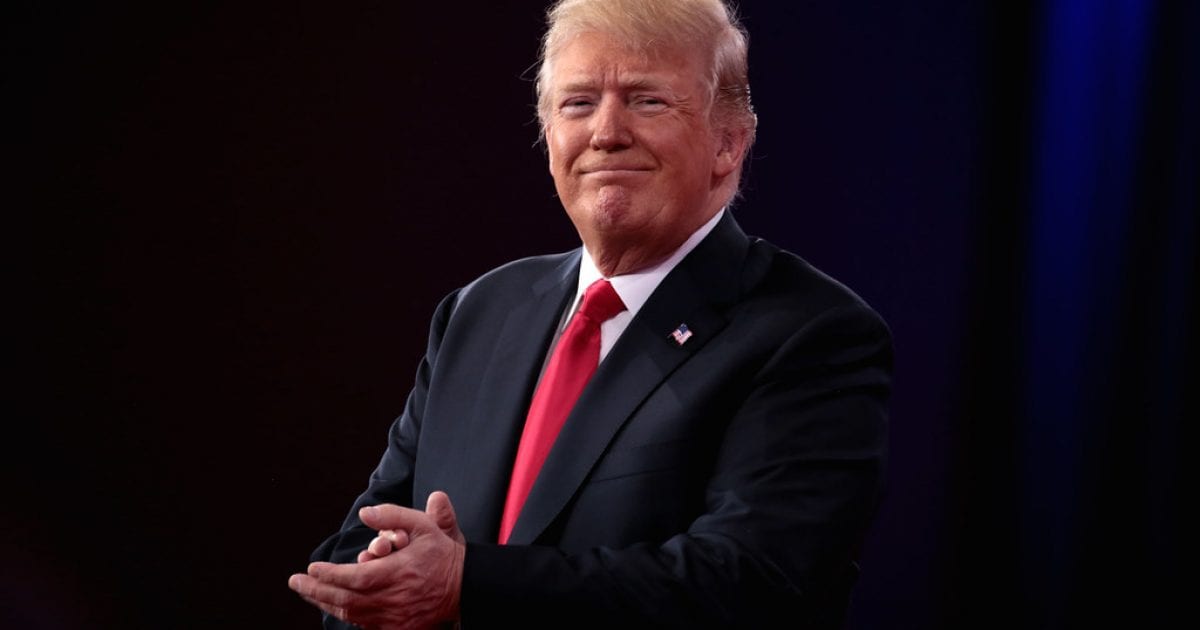Even left-leaning media like The Washington Post can’t hide from the truth anymore: the U.S. economy is the best it has been in decades underneath President Trump!
This is especially true for minority groups, who are making historic strides underneath Trump.
The Washington Post just published an analysis on employment within minority communities that reveals of the 5.2 million jobs that have been added to the economy since Trump stepped into the White House, 86% of those hires have been people of color.
Here's more from The Washington Post analysis:
When Mónica Hernández told her husband that her 2019 New Year’s resolution was to go back to work, he was surprised. He kept asking her if that’s what she really wanted to do. She had been out of the workforce for a year after a difficult pregnancy and the birth of their first child.
“I want to put my brain to use,” Hernández told her husband. “Now my son is here, and it makes me want to do even more.”
Hernández, 28, landed a job this spring as a part-time receptionist at Impressions Pediatric Therapy in Maryland, making her part of a surge of Hispanic and African American women who are entering the workforce amid one of the hottest labor markets in U.S. history.
Today, she earns $15 an hour, a big jump from the $9-an-hour cashier jobs she once thought would be her working life. Clients like that Hernández is bilingual, and the owner of the fast-growing therapy practice just offered her a full-time position.
The surge of minority women getting jobs has helped push the U.S. workforce across a historic threshold. For the first time, most new hires of prime working age (25 to 54) are people of color, according to a Washington Post analysis of data the Labor Department began collecting in the 1970s. Minority hires overtook white hires last year.
Women are predominantly driving this trend, which is so powerful that even many women who weren’t thinking about working — because they were in school, caring for kids or at home for other reasons — are being lured into employment, according to The Post’s analysis.
Minority women began to pour into the labor market in 2015, and they have begun to reshape the demographics of the U.S. workforce, especially because many white baby boomers have been retiring. There are 5.2 million more people in the United States with jobs than at the end of 2016, and 4.5 million of them are minorities, according to The Post’s analysis of Labor Department data.
Now, the question is whether minority groups will hold on to these gains as the economy shows signs of fraying. Job growth is slowing this year, the Labor Department reported Friday, giving rise to fears that a trade war and global economic slowdown that have already hit U.S. economic growth could begin to restrict hiring.
President Trump frequently celebrates the recent record lows in the Hispanic and African American unemployment rates, one of his favorite talking points as he makes the economy a central argument for reelection.
“We’ve seen a lot of gains in employment among lower-income and lower-education groups,” said Marianne Wanamaker, an economist and former member of Trump’s Council of Economic Advisers. “But it is precisely those groups that are vulnerable to layoffs if economic activity slows.”
Politicians and top policymakers, including at the Federal Reserve, say it’s critical to keep this economic expansion going so more Americans can get jobs — and build financial security. And it’s especially critical for many minority families, who usually earn less and have far less wealth than whites.
The Hill also said:
People of color make up the bulk of new working-age hires for the first time ever, according to an analysis from The Washington Post.
Women have driven the trend, according to the Post, which cited Labor Department data going back to the 1970s. The trend has been driven both by a wave of retirements among white baby boomers and another wave of minority women entering the workforce in 2015, the newspaper noted.
It added, however, that the demographics could be some of the first affected in a slowing job market.
“We’ve seen a lot of gains in employment among lower-income and lower-education groups,” Marianne Wanamaker, an economist and former member of President Trump’s Council of Economic Advisers, told the Post. “But it is precisely those groups that are vulnerable to layoffs if economic activity slows.”
Hmm...seems like even The Washington Post has to admit that Trump is right!




Join the conversation!
Please share your thoughts about this article below. We value your opinions, and would love to see you add to the discussion!